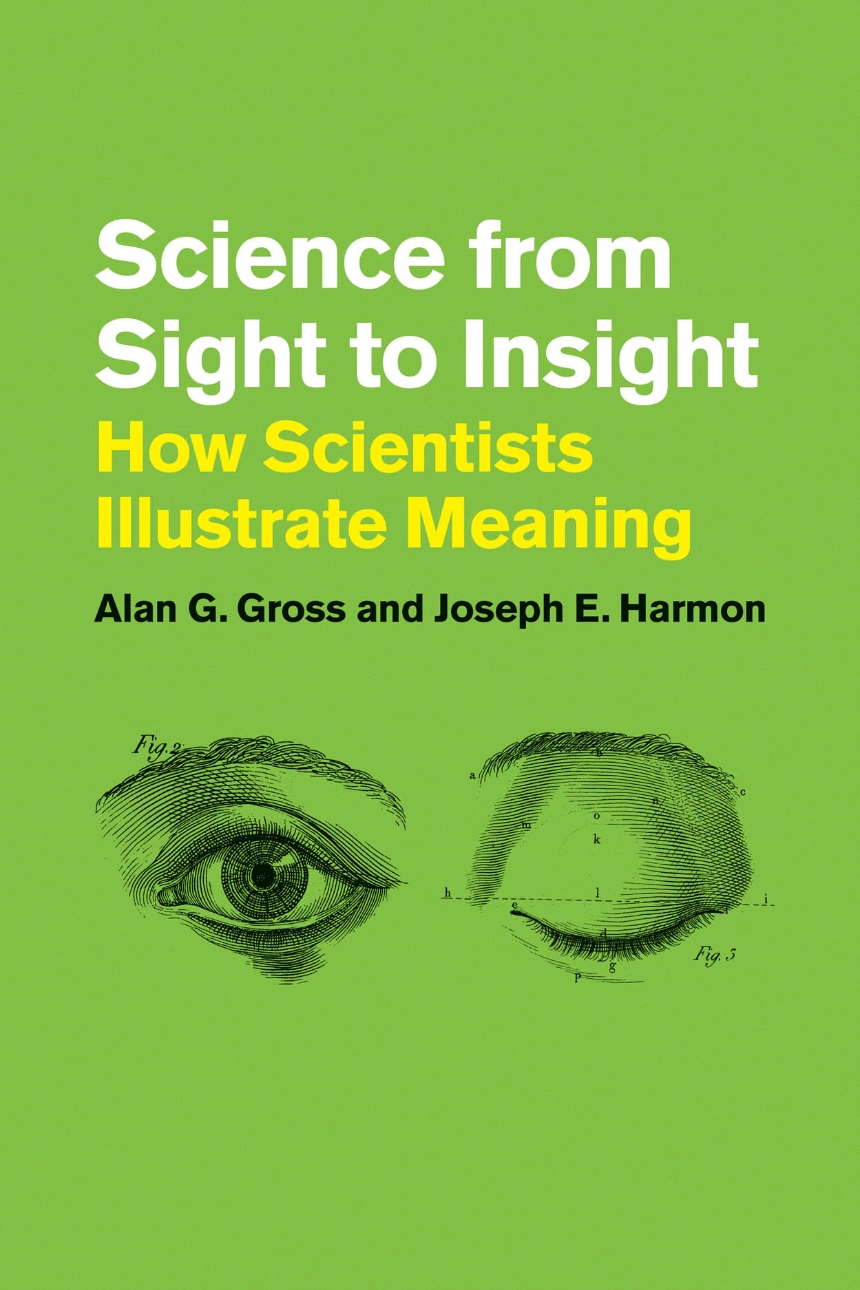Science from Sight to Insight
How Scientists Illustrate Meaning
John Dalton’s molecular structures. Scatter plots and geometric diagrams. Watson and Crick’s double helix. The way in which scientists understand the world—and the key concepts that explain it—is undeniably bound up in not only words, but images. Moreover, from PowerPoint presentations to articles in academic journals, scientific communication routinely relies on the relationship between words and pictures. In Science from Sight to Insight, Alan G. Gross and Joseph E. Harmon present a short history of the scientific visual, and then formulate a theory about the interaction between the visual and textual. With great insight and admirable rigor, the authors argue that scientific meaning itself comes from the complex interplay between the verbal and the visual in the form of graphs, diagrams, maps, drawings, and photographs. The authors use a variety of tools to probe the nature of scientific images, from Heidegger’s philosophy of science to Peirce’s semiotics of visual communication. Their synthesis of these elements offers readers an examination of scientific visuals at a much deeper and more meaningful level than ever before.
344 pages | 92 halftones, 46 line drawings | 6 x 9 | © 2013
Cognitive Science: Language
Language and Linguistics: General Language and Linguistics
Reviews
Table of Contents
Introduction: Verbal- Visual Interaction in Science
1. A Framework for Understanding Verbal- Visual Interaction
2. Understanding Scientifi c Visuals and Tables: A Taxonomy
3. Visual Evolution and the Heideggerian Transformation
4. Verbal- Visual Interaction and Scientifi c Argument: The Contexts of Discovery and Justifi cation
5. Visual Argument and Narrative in the “Historical” Sciences: The Example of Geology
6. Verbal- Visual Interaction in the Victorian Discovery of Deep Time
7. The Public Science Lecture: PowerPoint Transforms a Genre
8. Weaving the Web of Scientifi c Knowledge: Visuals on the Internet
Acknowledgments
References
Index
1. A Framework for Understanding Verbal- Visual Interaction
2. Understanding Scientifi c Visuals and Tables: A Taxonomy
3. Visual Evolution and the Heideggerian Transformation
4. Verbal- Visual Interaction and Scientifi c Argument: The Contexts of Discovery and Justifi cation
5. Visual Argument and Narrative in the “Historical” Sciences: The Example of Geology
6. Verbal- Visual Interaction in the Victorian Discovery of Deep Time
7. The Public Science Lecture: PowerPoint Transforms a Genre
8. Weaving the Web of Scientifi c Knowledge: Visuals on the Internet
Acknowledgments
References
Index
